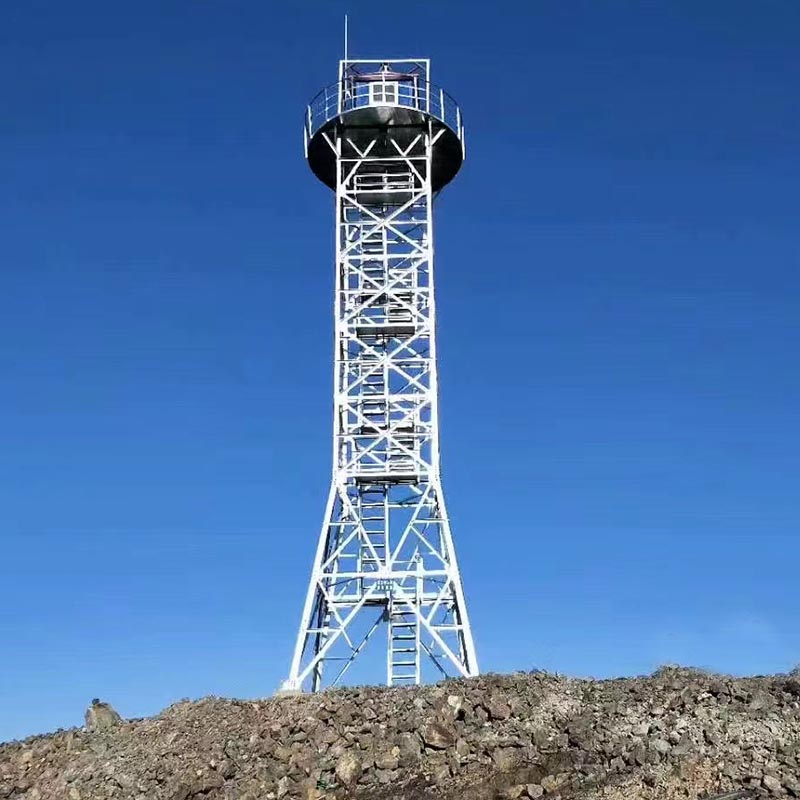 English
English Español
Español  Português
Português  русский
русский  Français
Français  日本語
日本語  Deutsch
Deutsch  tiếng Việt
tiếng Việt  Italiano
Italiano  Nederlands
Nederlands  ภาษาไทย
ภาษาไทย  Polski
Polski  한국어
한국어  Svenska
Svenska  magyar
magyar  Malay
Malay  বাংলা ভাষার
বাংলা ভাষার  Dansk
Dansk  Suomi
Suomi  हिन्दी
हिन्दी  Pilipino
Pilipino  Türkçe
Türkçe  Gaeilge
Gaeilge  العربية
العربية  Indonesia
Indonesia  Norsk
Norsk  تمل
تمل  český
český  ελληνικά
ελληνικά  український
український  Javanese
Javanese  فارسی
فارسی  தமிழ்
தமிழ்  తెలుగు
తెలుగు  नेपाली
नेपाली  Burmese
Burmese  български
български  ລາວ
ລາວ  Latine
Latine  Қазақша
Қазақша  Euskal
Euskal  Azərbaycan
Azərbaycan  Slovenský jazyk
Slovenský jazyk  Македонски
Македонски  Lietuvos
Lietuvos  Eesti Keel
Eesti Keel  Română
Română  Slovenski
Slovenski  मराठी
मराठी  Srpski језик
Srpski језик
Why Are Cities Deploying 5G-Ready Monitoring Towers for Smart Traffic Management Systems?
2025-07-01
Thinking Traffic Sentinel
Many people think that the monitoring tower is just a taller camera bracket, but in fact, it is an intelligent terminal with a brain. At the Dongguan production base, Chief Engineer Wang Haifeng gently tapped on the tower body that had just come off the production line. "This tower is equipped with 12 sets of sensors that can simultaneously capture vehicle speed, vehicle distance, pedestrian density and even air quality. It's like installing a 24-hour non-stop electronic sentry for the city."
In the pilot area of the Hangzhou Asian Games Village, a network composed of 30 XUTENG monitoring towers is in operation. The head of the traffic police detachment opened the comparison data and said, "The congestion index during morning and evening rush hours was 7.2 before, but it has now dropped to 5.8." The most amazing thing is that the system can predict congestion 15 minutes later and automatically adjust the signal light timing. He pointed to the millimeter-wave radar at the top of the tower and said, "This' small disc 'can penetrate rain and fog, and its recognition accuracy remains above 92% on rainy days."
The Urban Pulse Coexisting with 5G
When monitoring towers meet 5G, it's like equipping urban traffic with high-speed nerves. Li Ran pulled up the real-time footage of Shanghai Hongqiao Hub. 200 meters away, the monitoring tower was pushing the countdown of traffic lights to the surrounding vehicles through 5G micro base stations. "The latency of traditional 4G networks is over 200 milliseconds, but our system can compress it to 20 milliseconds, enabling autonomous driving vehicles to gain 'beyond visual range' perception capabilities."
In Guangzhou Bio-Island, XUTENG's V2X (Vehicle-to-Everything) project in collaboration with automakers is currently under testing. When a test vehicle approaches an intersection, the monitoring tower sends information such as pedestrian trajectories and oncoming traffic flow to the on-board terminal 300 meters in advance. This is equivalent to giving each car a "sky eye". The project engineer said, "Test data shows that the accident rate has dropped by 41%, especially for unexpected situations like 'sudden appearances'."
Urban furniture that Can deform
Urban space is extremely precious, and monitoring towers must learn to be "invisible". Wang Haifeng was showing the modular design drawings. "Our towers can transform according to the scene: they can be landscape light posts in scenic spots, charging pile brackets in communities, and ETC gantry frames on expressways." He particularly mentioned the case of Qianhai in Shenzhen, saying, "There, the height of all municipal facilities is required not to exceed 3 meters. So we integrated the monitoring equipment into the street lamp poles and still achieved full-element perception."
This "seventy-two transformations" ability has made the monitoring tower very popular in the Taikoo Li business district of Chengdu. The director of business operations did the math: "Previously, 12 types of equipment needed to be installed, but now one tower can handle it all. The annual maintenance cost has dropped from 480,000 to 180,000." What surprised him even more was the advertising value of the tower body. "The model with an LED screen can bring in an additional income of 30,000 yuan per month, and the equipment cost can be recovered within two years."

Imagination of the Future of Monitoring Towers
"We are implanting 'growth genes' into the monitoring tower." At the R&D center in Suzhou, Wang Haifeng's team is testing self-evolving algorithms. "In the future, each tower will be able to automatically adjust its monitoring strategy based on traffic flow, just like neurons can self-repair." He envisions a more distant future, "When the monitoring towers are deeply integrated with the city brain, they can even predict the best evacuation route when a concert ends."
In Xiongan New Area, the monitoring tower of XUTENG has already demonstrated this potential. The system, based on historical data, predicts that the peak will come earlier on Friday night and automatically extends the green light duration around the school by 20 seconds. This is much more accurate than manual scheduling. The person in charge of the transportation bureau of the new district said, "Now the system can independently learn over 300 traffic scenarios with an accuracy rate exceeding 90%."
The global map is quietly expanding
"Overseas orders increased by 300% in the first quarter of this year. Our solutions are being used in smart city projects in Dubai and Singapore." Chen Min, the director of international business of the company, opened the world map and said, "In the new city of NEOM in Saudi Arabia, our monitoring tower has to adapt to a temperature of 55℃." In the Arctic Circle of Norway, it is necessary to ensure normal operation at -40℃. These extreme environments force us to keep innovating.
The project in Ginza, Tokyo, is what the team is most proud of. In the cramped commercial area, they designed the monitoring tower as a cylinder with a diameter of only 30 centimeters, yet it integrates eight types of sensors. The Japanese client said this was a "spatial magic trick". Chen Min smiled and said, "Now even traditional communication tower enterprises are coming to us for cooperation to jointly develop monitoring infrastructure for the 6G era."



